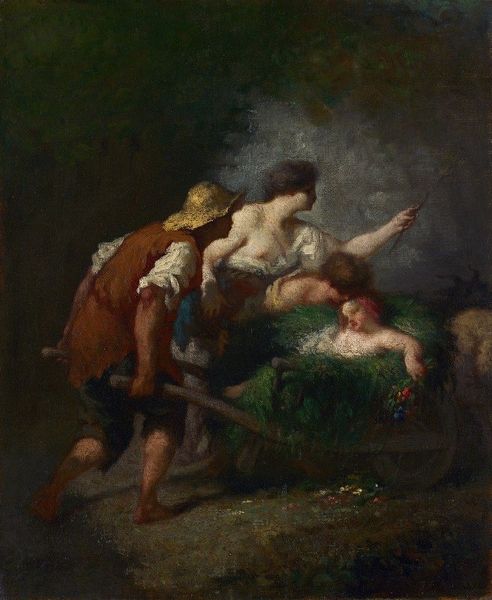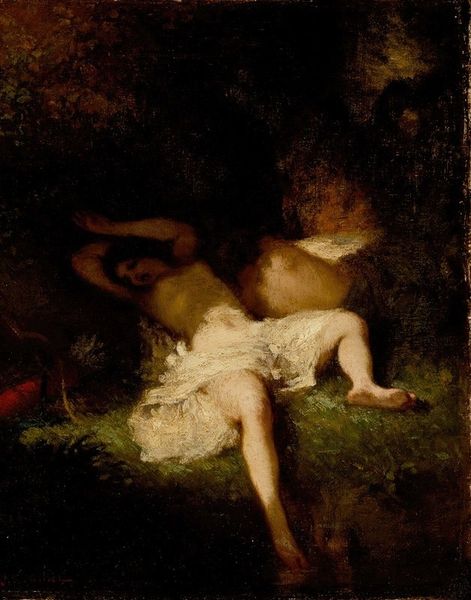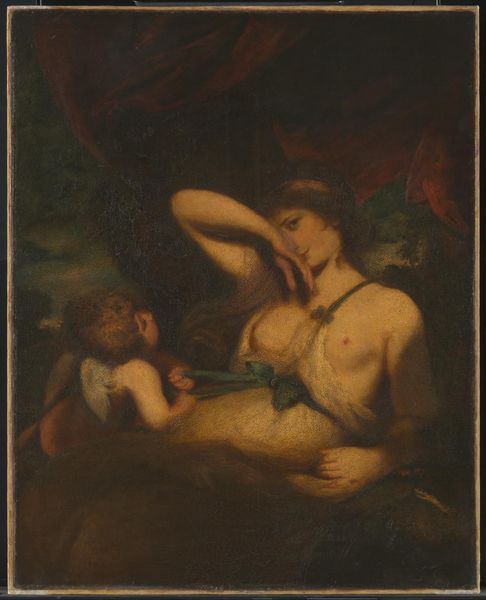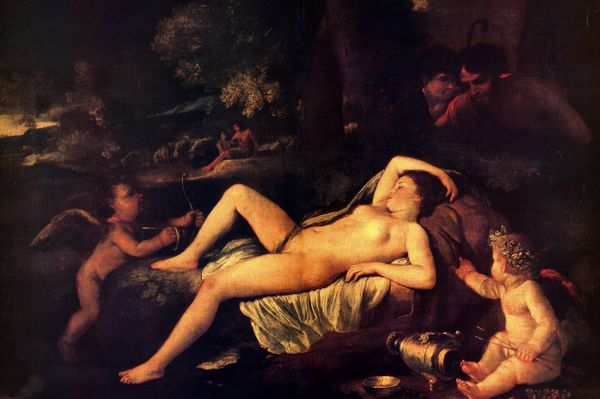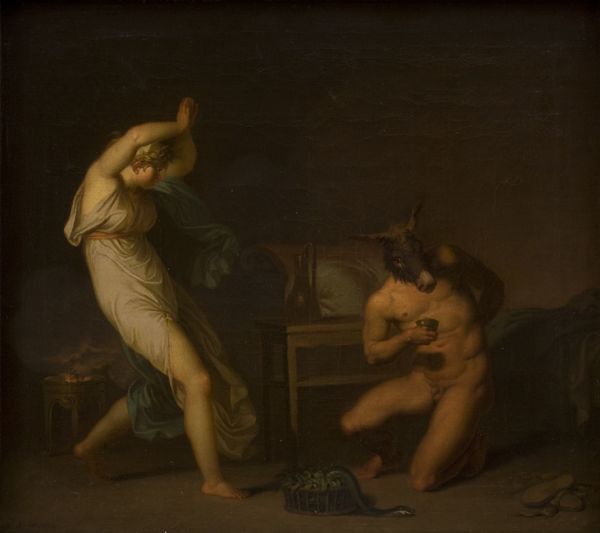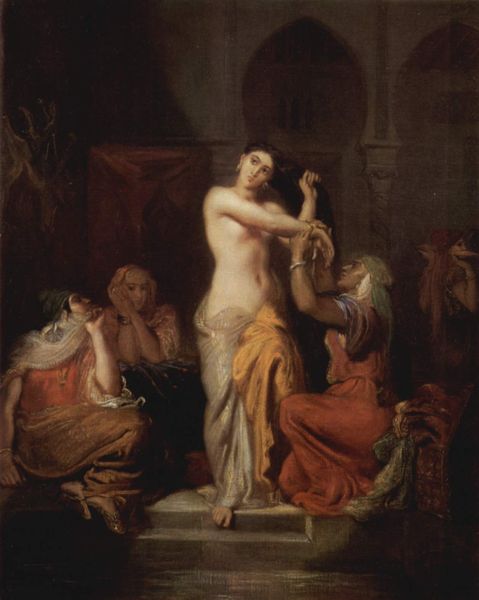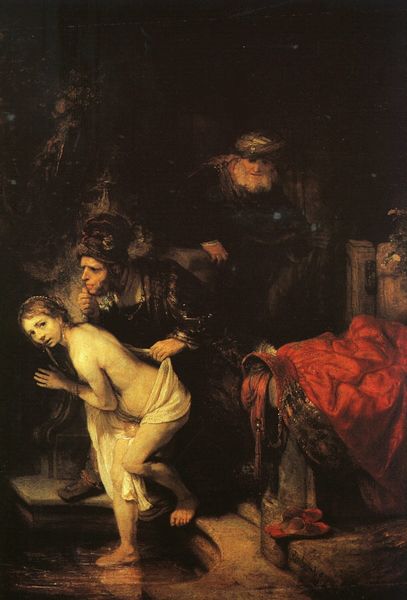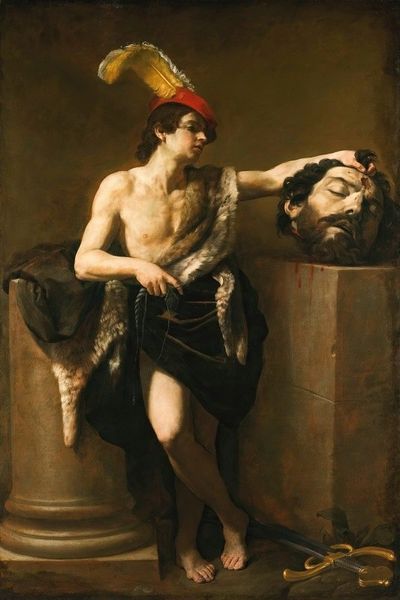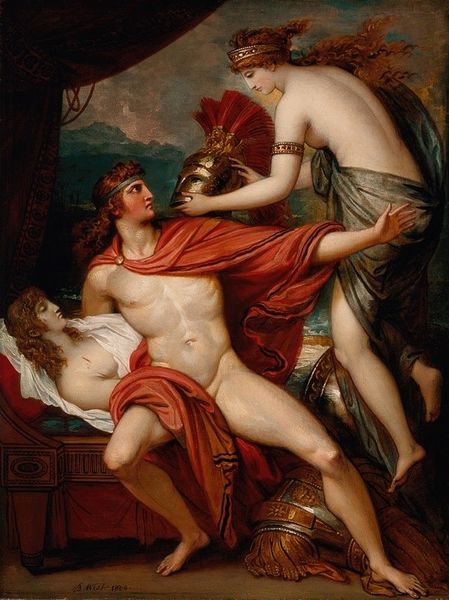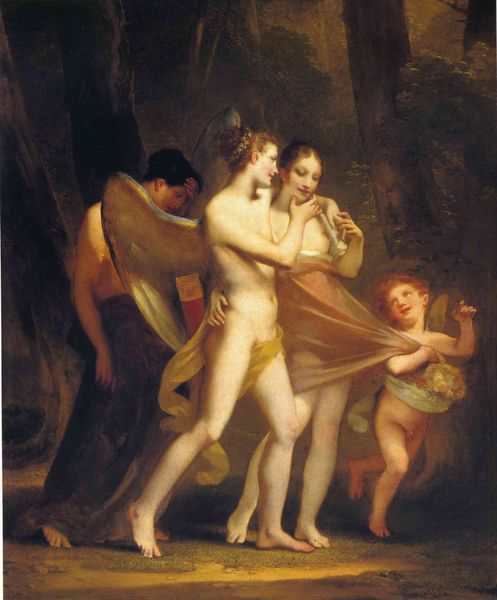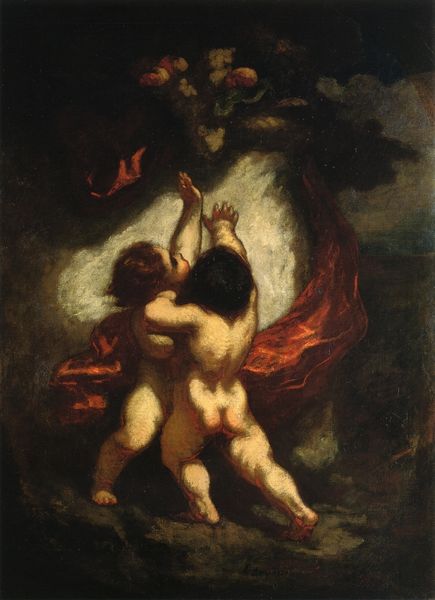
#
impressionistic
#
blurred colour hue
#
ethereal
#
blurry
#
blurred
#
slightly blurry
#
dark silhouette
#
mythology
#
blurriness
#
overexposure
#
blur
Copyright: Public Domain: Artvee
Editor: We are looking at Goya's "Allegory of Love, Cupid and Psyche", painted between 1798 and 1805. It’s dark, almost dreamlike. The figures seem to emerge from the shadows, but I struggle to make them out properly... what are your thoughts, what details do you see that I'm missing? Curator: You know, sometimes I think Goya painted with the very substance of dreams themselves! Look closely, imagine the canvas is the space of our subconscious. What’s real and what’s imagined begin to blur, don't they? I wonder, how does the intense darkness of the background affect the feeling of the mythological tale for you? Editor: It definitely feels unsettling. Is that darkness a stylistic choice of his time? Curator: To an extent, yes, but with Goya, I believe it went deeper. Remember this was painted during a tumultuous time in Europe, during wars and societal upheavals. Don't you feel like the ambiguity here acts almost as a stand in for the fears and the hopes of that era, maybe even of any era? What kind of intimacy can truly exist in that deep shade, that shadow? Is Cupid reaching for Psyche, or are they both perhaps floating away, consumed by uncertainty and dread? Editor: I see your point. That makes the story less romantic, more about the vulnerability and fleeting nature of love itself. Curator: Precisely! It’s not just a pretty picture. What would happen if we stripped love away from its comfortable associations? What could possibly crawl into all those spaces it has left bare? Goya challenges us to really confront this. How brave, don't you think? Editor: Absolutely! Now I see it as an invitation to question those conventional notions. Thanks! Curator: My pleasure! And, I suppose, thanks to Goya for prompting us both!
Comments
No comments
Be the first to comment and join the conversation on the ultimate creative platform.
